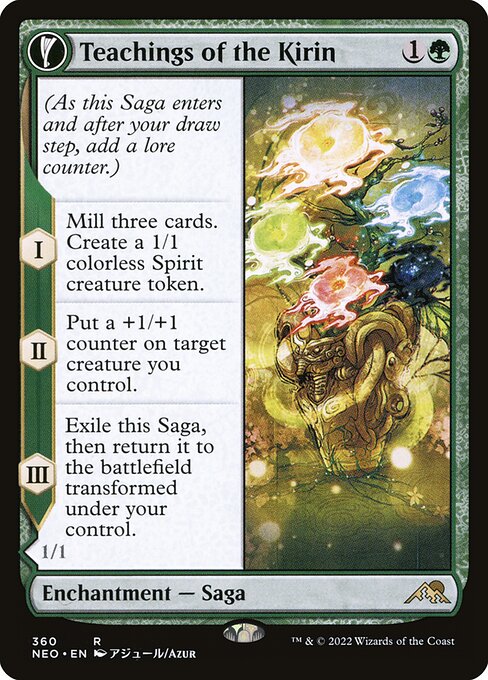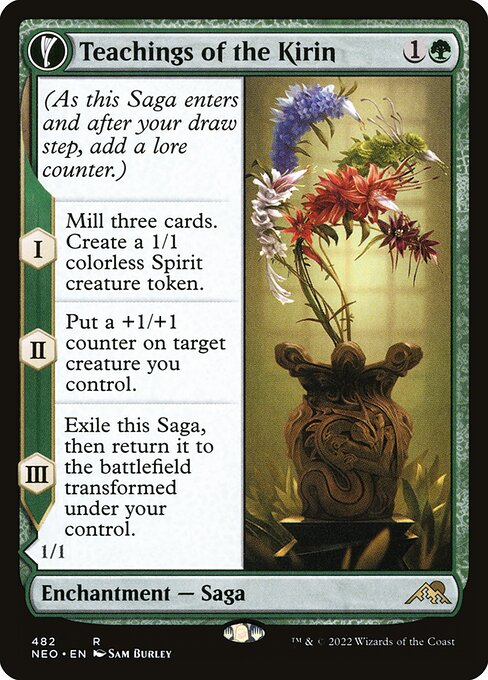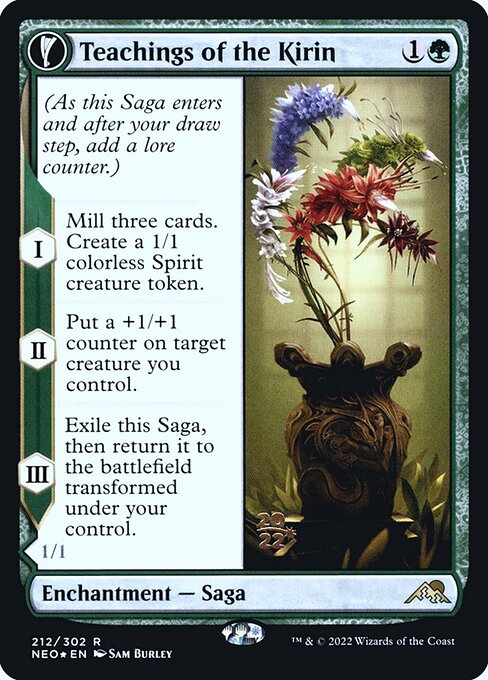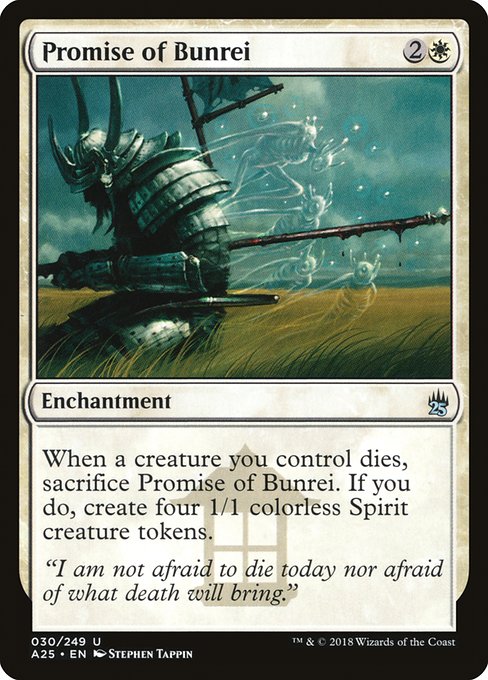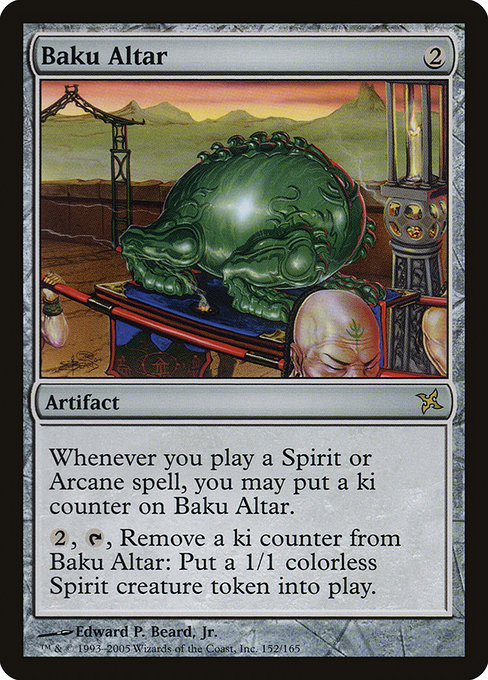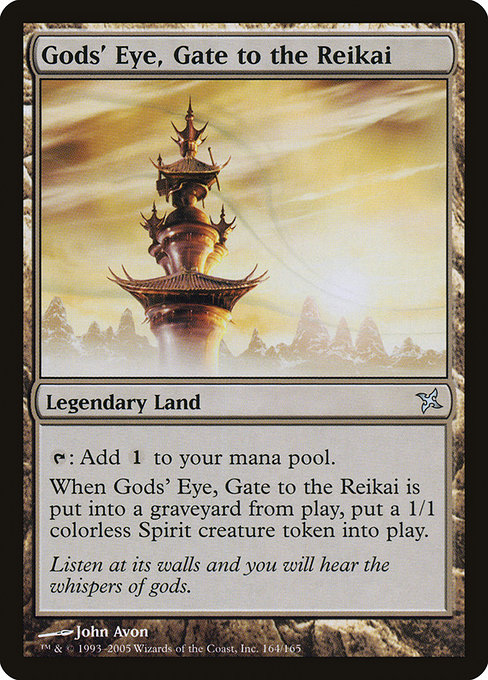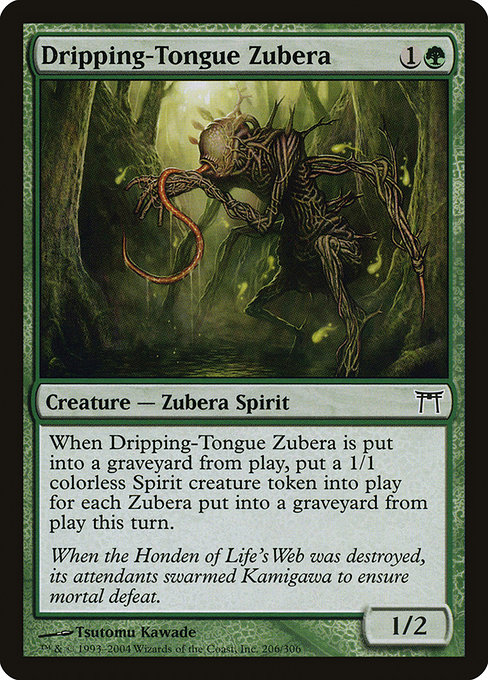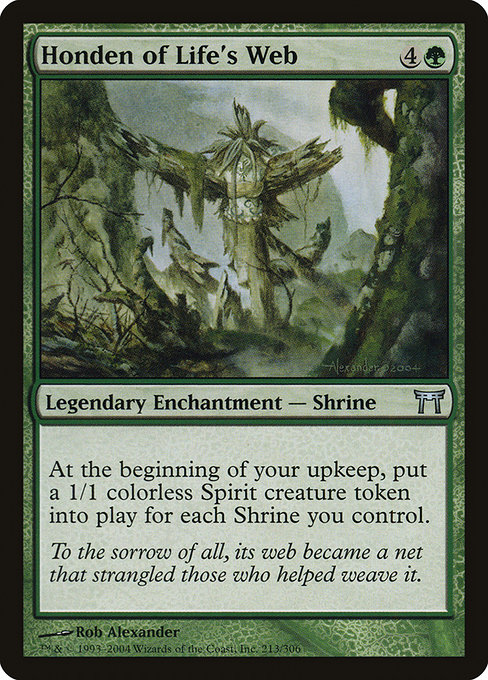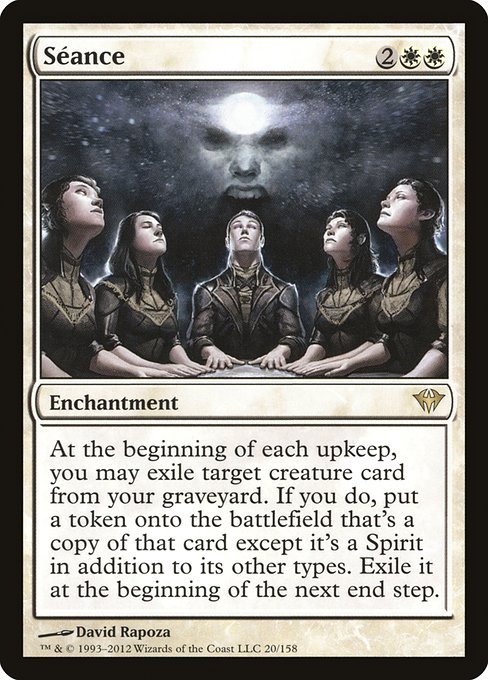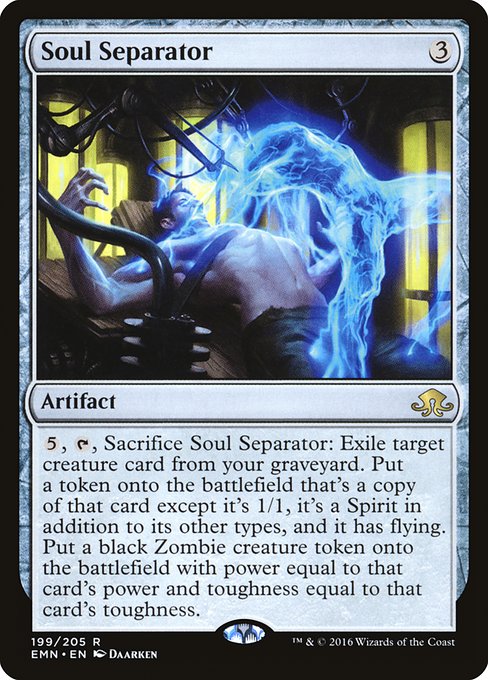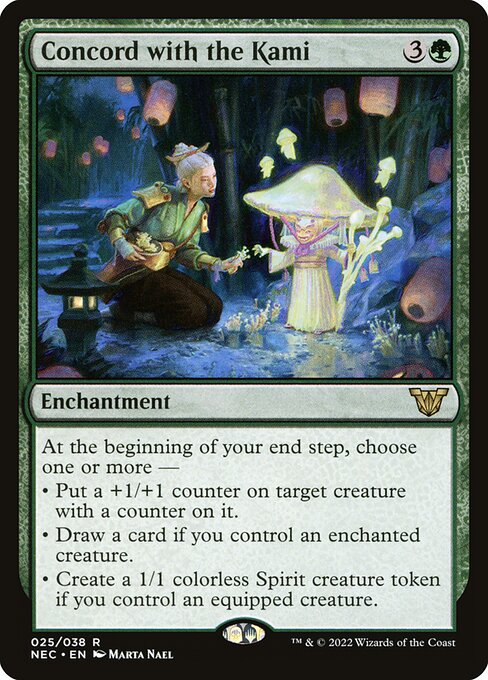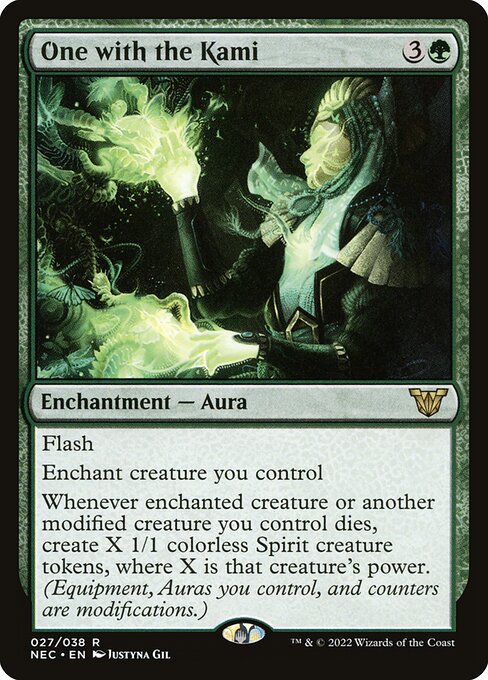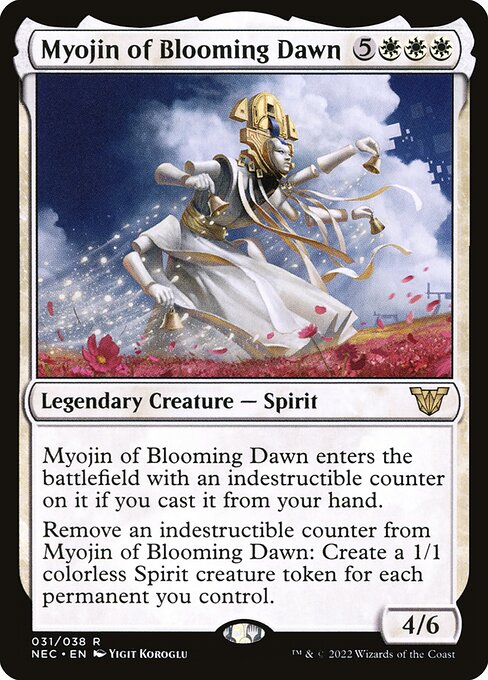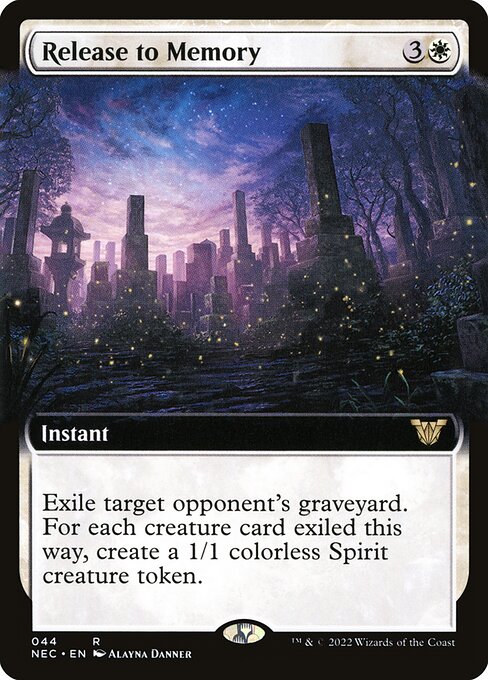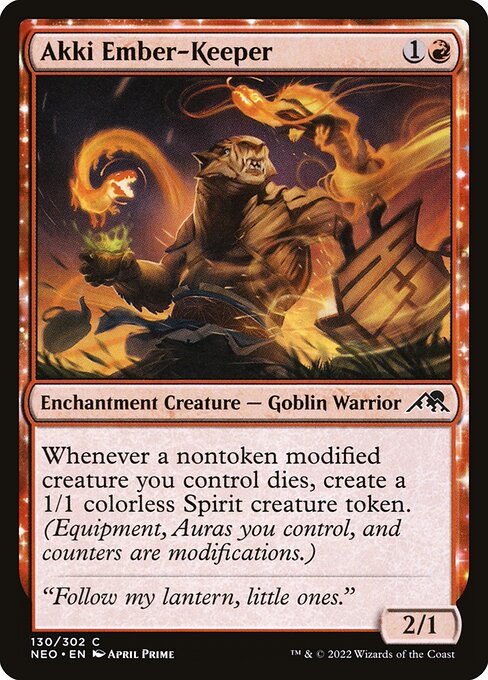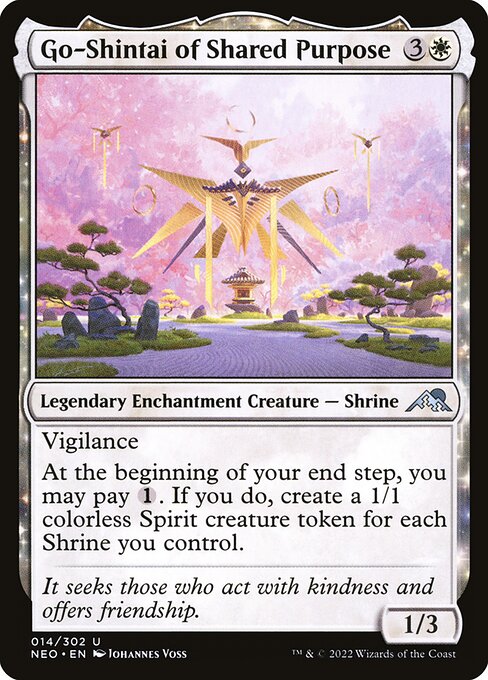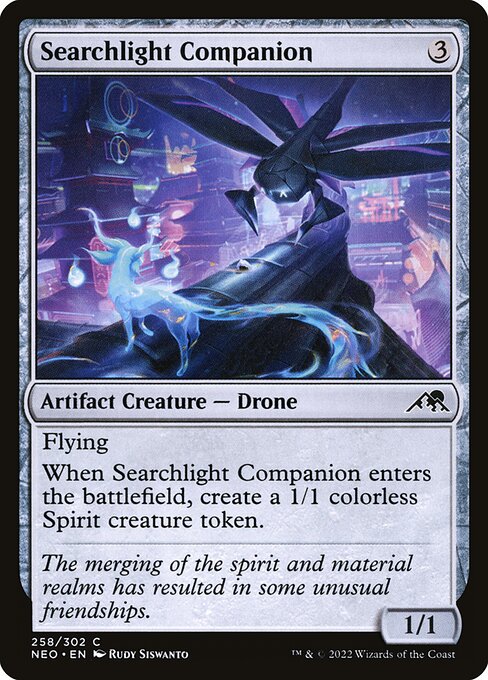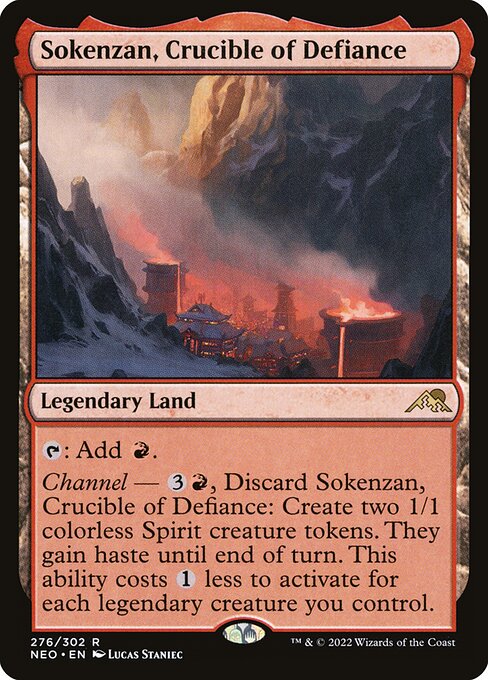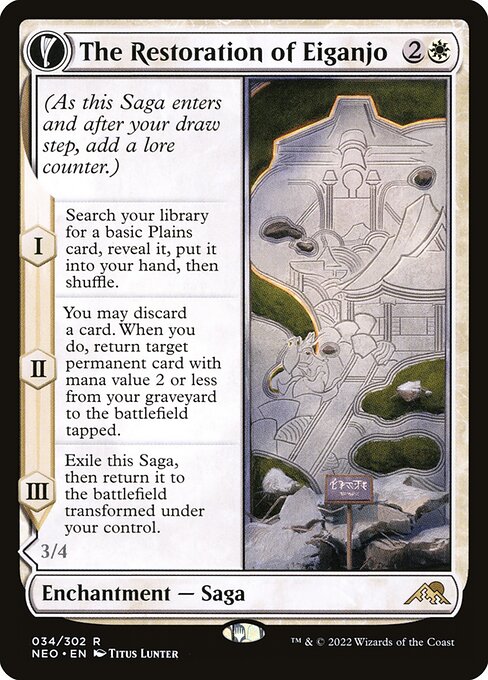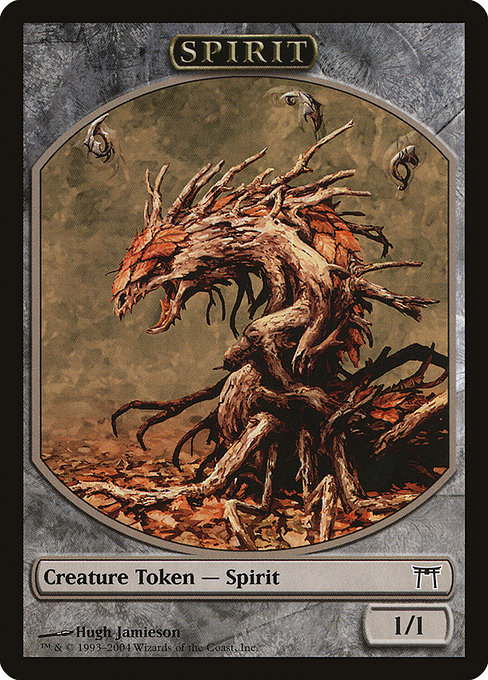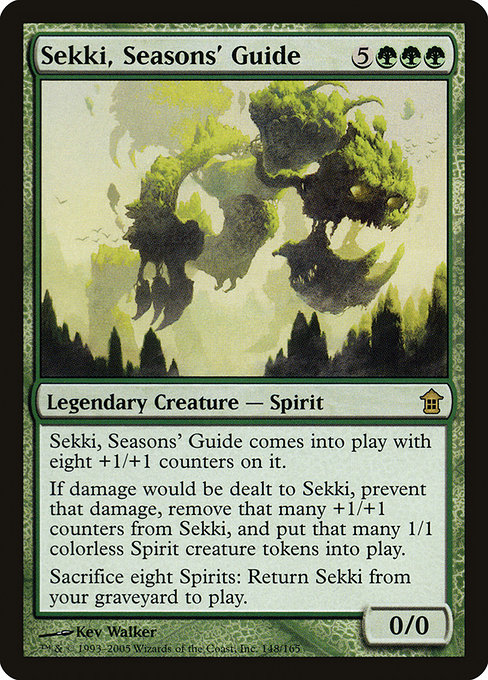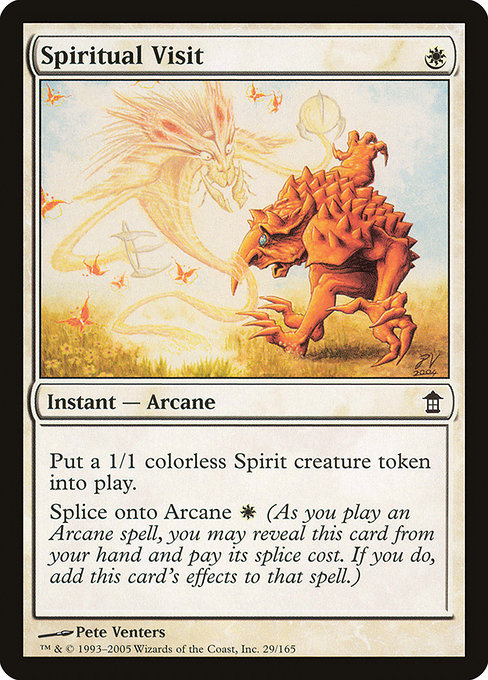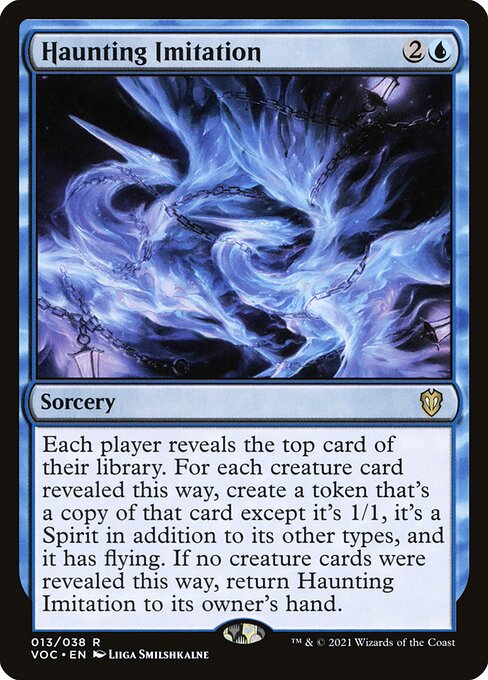Enseñanzas de los kirin // Orochi tocado por el kirin
//
Encantamiento — Saga // Criatura encantamiento — Monje víbora
(En cuanto esta Saga entre y después de tu paso de robar, agrega un contador de sabiduría.)
I — Muele tres cartas. Crea una ficha de criatura Espíritu incolora 1/1.
II — Pon un contador +1/+1 sobre la criatura objetivo que controlas.
III — Exilia esta Saga, luego regrésala al campo de batalla transformada bajo tu control. // Siempre que el Orochi tocado por el kirin ataque, elige uno:
• Exilia la carta de criatura objetivo de un cementerio. Cuando lo hagas, crea una ficha de criatura Espíritu incolora 1/1.
• Exilia la carta que no sea de criatura objetivo de un cementerio. Cuando lo hagas, pon un contador +1/+1 sobre la criatura objetivo que controlas.
I — Muele tres cartas. Crea una ficha de criatura Espíritu incolora 1/1.
II — Pon un contador +1/+1 sobre la criatura objetivo que controlas.
III — Exilia esta Saga, luego regrésala al campo de batalla transformada bajo tu control. // Siempre que el Orochi tocado por el kirin ataque, elige uno:
• Exilia la carta de criatura objetivo de un cementerio. Cuando lo hagas, crea una ficha de criatura Espíritu incolora 1/1.
• Exilia la carta que no sea de criatura objetivo de un cementerio. Cuando lo hagas, pon un contador +1/+1 sobre la criatura objetivo que controlas.
1/1
standard
future
historic
gladiator
pioneer
explorer
modern
legacy
pauper
vintage
penny
commander
brawl
alchemy
paupercommander
duel
oldschool
premodern
Rulings
A transforming double-faced card enters the battlefield with its front face up by default, unless a spell or ability instructs you to put it onto the battlefield transformed or you cast it transformed, in which case it enters with its back face up.
The back face of a transforming double-faced card usually has a color indicator that defines its color.
The mana value of a transforming double-faced card is the mana value of its front face, no matter which face is up.
Each transforming double-faced card in this set is cast face up. In every zone other than the battlefield, consider only the characteristics of its front face. If it is on the battlefield, consider only the characteristics of the face that's up; the other face's characteristics are ignored.
Each face of a transforming double-faced card has its own set of characteristics: name, types, subtypes, abilities, and so on. While a transforming double-faced permanent is on the battlefield, consider only the characteristics of the face that's currently up. The other set of characteristics is ignored.
If you are instructed to put a card that isn't a double-faced card onto the battlefield transformed, it will not enter the battlefield at all. In that case, it stays in the zone it was previously in. For example, if a single-faced card is a copy of Azusa's Many Journeys, the chapter III ability will cause it to be exiled and then remain in exile.
The back face of a transforming double-faced card usually has a color indicator that defines its color.
The mana value of a transforming double-faced card is the mana value of its front face, no matter which face is up.
Each transforming double-faced card in this set is cast face up. In every zone other than the battlefield, consider only the characteristics of its front face. If it is on the battlefield, consider only the characteristics of the face that's up; the other face's characteristics are ignored.
Each face of a transforming double-faced card has its own set of characteristics: name, types, subtypes, abilities, and so on. While a transforming double-faced permanent is on the battlefield, consider only the characteristics of the face that's currently up. The other set of characteristics is ignored.
If you are instructed to put a card that isn't a double-faced card onto the battlefield transformed, it will not enter the battlefield at all. In that case, it stays in the zone it was previously in. For example, if a single-faced card is a copy of Azusa's Many Journeys, the chapter III ability will cause it to be exiled and then remain in exile.
Rulings
A transforming double-faced card enters the battlefield with its front face up by default, unless a spell or ability instructs you to put it onto the battlefield transformed or you cast it transformed, in which case it enters with its back face up.
The back face of a transforming double-faced card usually has a color indicator that defines its color.
The mana value of a transforming double-faced card is the mana value of its front face, no matter which face is up.
Each transforming double-faced card in this set is cast face up. In every zone other than the battlefield, consider only the characteristics of its front face. If it is on the battlefield, consider only the characteristics of the face that's up; the other face's characteristics are ignored.
Each face of a transforming double-faced card has its own set of characteristics: name, types, subtypes, abilities, and so on. While a transforming double-faced permanent is on the battlefield, consider only the characteristics of the face that's currently up. The other set of characteristics is ignored.
If you are instructed to put a card that isn't a double-faced card onto the battlefield transformed, it will not enter the battlefield at all. In that case, it stays in the zone it was previously in. For example, if a single-faced card is a copy of Azusa's Many Journeys, the chapter III ability will cause it to be exiled and then remain in exile.
The back face of a transforming double-faced card usually has a color indicator that defines its color.
The mana value of a transforming double-faced card is the mana value of its front face, no matter which face is up.
Each transforming double-faced card in this set is cast face up. In every zone other than the battlefield, consider only the characteristics of its front face. If it is on the battlefield, consider only the characteristics of the face that's up; the other face's characteristics are ignored.
Each face of a transforming double-faced card has its own set of characteristics: name, types, subtypes, abilities, and so on. While a transforming double-faced permanent is on the battlefield, consider only the characteristics of the face that's currently up. The other set of characteristics is ignored.
If you are instructed to put a card that isn't a double-faced card onto the battlefield transformed, it will not enter the battlefield at all. In that case, it stays in the zone it was previously in. For example, if a single-faced card is a copy of Azusa's Many Journeys, the chapter III ability will cause it to be exiled and then remain in exile.
Votre collection ? vos decks ?
Envie de gérer votre collection et/ou créer des decks ?
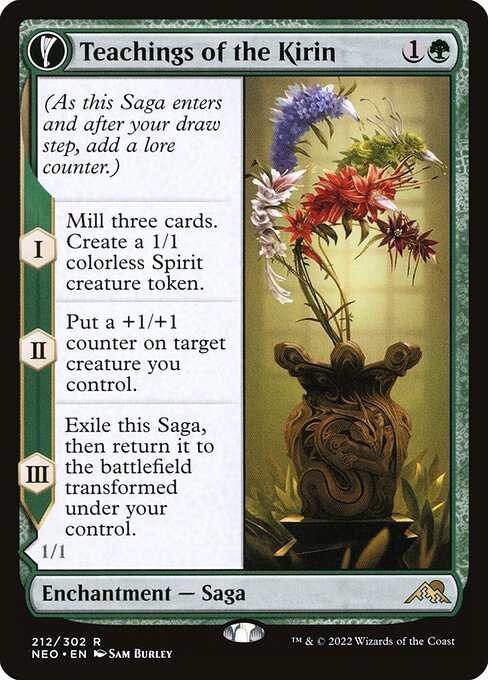

 0
0
 0.13€
0.13€
